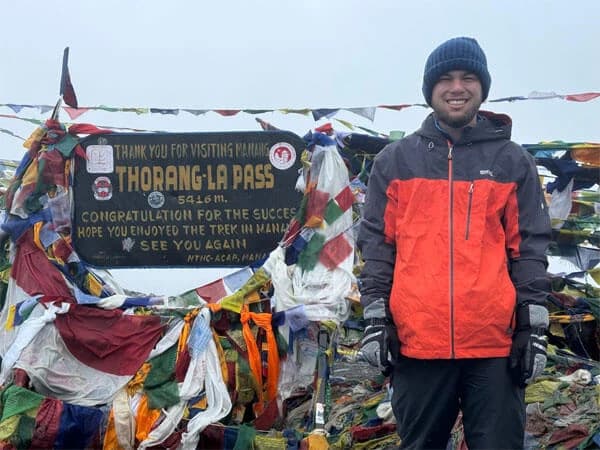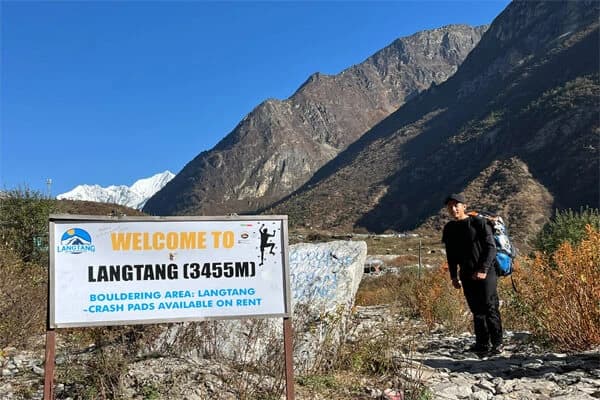Are you searching for Annapurna Circuit Trek cost ?. We will show you the items that cost for Annapurna Round Trek, such as meals, lodging, transportation, guides, and permits. While some spend more, others spend less depending on how they travel.
The Annapurna Circuit Trek is one of the most breathtaking treks in Nepal. You pass past local villages, tall mountains, deep valleys, and green slopes. You can walk across swinging bridges, see snow-capped peaks, and even stop by a hot spring. However, it is crucial to know how much money you will need before embarking on this significant expedition.
This article will assist you in creating a budget if you are considering this expedition for 2025. You will discover useful advice here whether you are traveling alone or with a guide. You do not want to run out of cash when trekking!
We also discuss what is worth spending more for and how to save money. With the help of this blog, you may prepare for the vacation and enjoy every moment worry-free. Let us take a step-by-step look at the true cost of the Annapurna Circuit Trek.
Annapurna Circuit Trek Overview
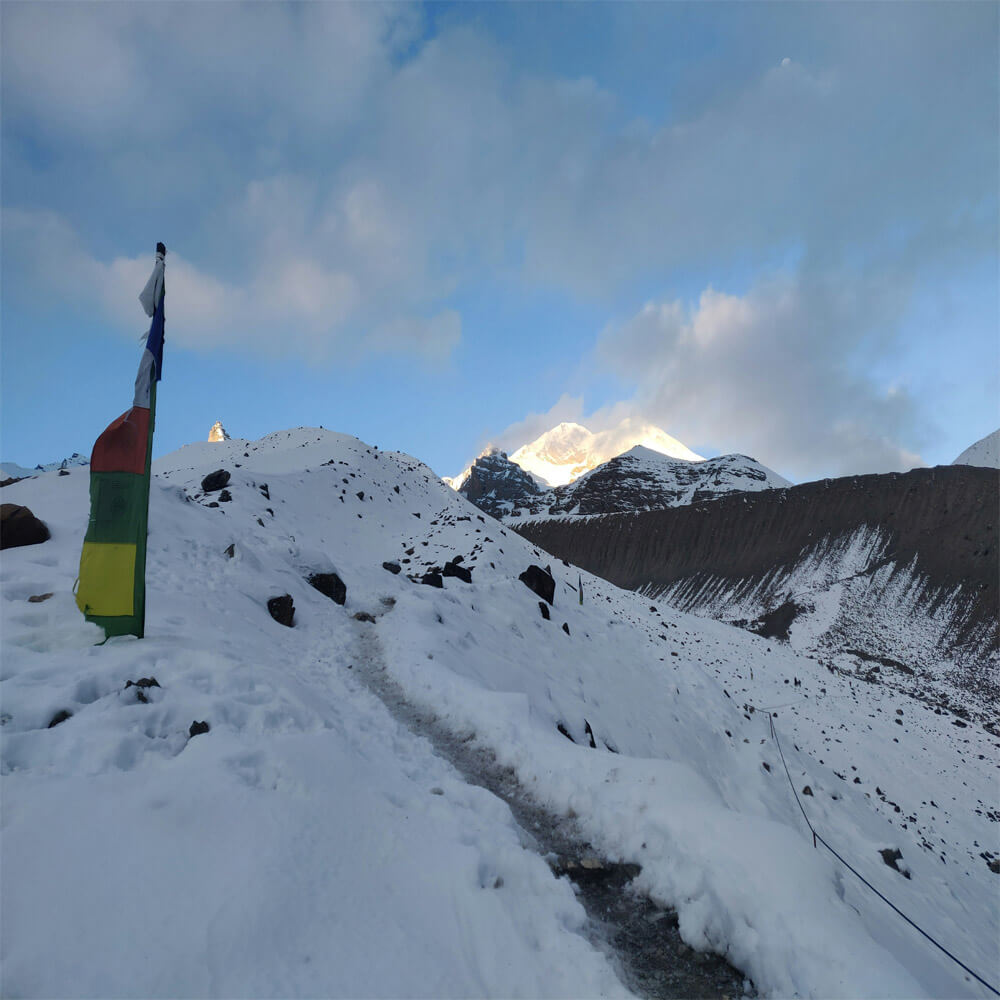
One of most well-known trekking in Nepal is the Annapurna Circuit Trek. It circles the massive Annapurna mountains. You pass through a variety of places, including chilly snow-capped mountains and lush, green forests. Thorong La Pass, at 5,416 meters above sea level, is the highest point!
In addition to seeing stunning sights like waterfalls, rivers, temples, and towering mountain peaks, you will travel through tiny communities and interact with hospitable locals. Depending on your pace and the route you pick, the walk typically takes 12 to 20 days.
How much does the Annapurna Circuit Trek cost? is a question that many people have. It depends, is the response. While some spend more, others spend less. Trekking alone might cost you between $700 and $1,000. It could cost $1,000 to $1,500 or more if you hire a package or accompany a guide.
The Annapurna Circuit trek costs contain a lot of expenses. Trekking permits, meals, lodging (called teahouses), porters, guides, and transportation are all expenses. Additional fees may apply for additional services like phone charging, Wi-Fi, hot showers, and refreshments.
Additionally, some individuals travel to other locations, such as Tilicho Lake. These detours increase the number of days and expenses. Additionally, the trip will cost extra if you choose to fly from Jomsom rather than take a lengthy bus travel.
The season, the size of your group, and the degree of comfort you desire will all affect your ultimate cost. The Annapurna Circuit, however, is a stunning trip full of mountains, good people, and joyful experiences regardless of how much you spend.
The trek is worth every rupee, despite the fact that it can be somewhat costly. In addition to learning about Nepali culture, you may take in the stunning scenery and pure air. Along with being a major adventure, it also benefits the locals who live along the trail.
Your walk will be enjoyable and easy if you prepare ahead of time and are aware of the expenses. We will break down every expense in the upcoming parts so you can plan wisely for your ideal travel in 2025.
Annapurna Circuit Trek Permit Cost
Special permits are required if you intend to trek to Annapurna Circuit. These permits, which function similarly to permission slips, let you enter the mountains' protected areas in a secure and authorized manner. The TIMS Card and the ACAP are the two primary permits you require.
What is the ACAP?
The acronym for the Annapurna Conservation Area Permit is ACAP. This permission contributes to the preservation of the Annapurna region's animals, culture, and natural environment. The price is $30. Before you begin your journey, you can purchase it in Pokhara or Kathmandu. To enter the region, each trekker has to hold this permit.
The TIMS Card
Trekkers’ Information Management System is what the TIMS card stands for. It assists the government in monitoring trekkers to ensure everyone's safety. If you hire a guide, the TIMS card costs $10; if you trek alone without a guide, it costs $20. The Nepal Tourism Board office or trekking agencies can provide you with a TIMS card.
Where to Find the Permits
Before the journey begins, most participants obtain their permits in Kathmandu or Pokhara. Our firm, Nepal Trekking Routes will make it easy for you to obtain these permits if you book your trek with us. This helps you travel with less stress and time.
These permits contribute to the mountains' continued cleanliness and public safety. Additionally, they aid conservation initiatives and nearby towns. By buying permits, you contribute to preserving Nepal's stunning landscape and rich cultural heritage for upcoming trekkers.
You risk running afoul of the local authorities and being unable to enter the Annapurna Conservation Area lawfully without these permits. Therefore, obtaining your TIMS and ACAP cards before to beginning is crucial.
Annapurna Circuit Trek price for Transportation
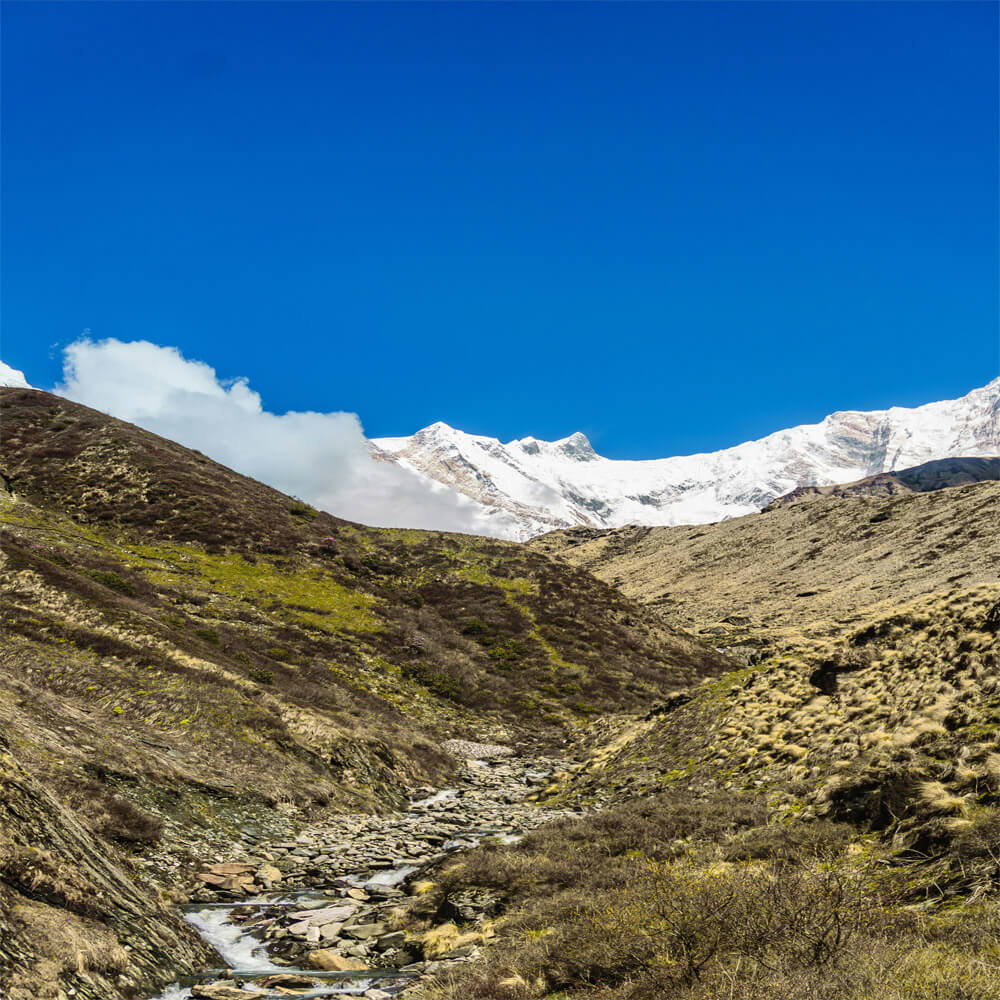
Reaching and departing from the Annapurna Circuit path is a crucial aspect of your journey that also impacts your spending plan. The towns where the trekking routes start, Besisahar or Dharapani, are where the majority of trekkers begin their journey. From larger towns like Kathmandu or Pokhara, you can take a local bus or a jeep to get to these starting sites.
Annapurna Circuit trek cost from Kathmandu to the Trail Start
Taking a local bus from Kathmandu or Pokhara to Besisahar is the most affordable way to save money. The bus is straightforward, but because it stops frequently, it could take longer. Typically, it costs $10 to $15. A jeep ride, on the other hand, is quicker but more expensive roughly $25 to $40 if you want to travel more quickly and comfortably. Buses could avoid rugged mountain routes, but the jeep can get there. Since a jeep saves time and effort before the trek starts, many trekkers find it to be worth the additional cost.
Annapurna Circuit trekking cost while Returning
Following the trek, the majority of people return to Kathmandu or their next destination from Jomsom or Pokhara. Bus and fly are your two primary options. The bus is less expensive and costs between $10 and $25, but it takes a lot longer and the roads in the mountains can be rough. The airfare is more, typically between $100 and $130, but the flight is quicker and more pleasant. You can save time and energy by flying, especially after walking for several days. While some passengers pay more for the convenience of flying, others take the bus to save money. In any case, it is a good idea to organize your transportation ahead of time so you know what best suits your schedule and budget.
Food and Accommodation Cost in Annapurna Circuit
Annapurna Circuit budget for Accommodation
The majority of trekkers on the Annapurna Circuit stay in teahouses, which are tiny guesthouses. These are modest mountain homes where trekkers can rest and dine. There are also very simple teahouses with thin blankets and wooden beds. There are others who have better rooms and comfortable comforters. The rooms are simpler and the price increases as you move deeper into the mountains.
A hotel for one night may cost as little as $5 at lower points along the trail. However, it may cost about $10 in higher villages like Thorong Phedi or Yak Kharka. It is best to make reservations in advance or get there before sundown if the route is crowded. You may stay at most teahouses for less money if you also eat there.
The majority of the rooms lack private toilets, however some do. Typically, other trekkers will use the same restroom as you. The rooms are not heated, so it gets chilly at night. You can stay warm by using a sleeping bag.
Cost of Annapurna Circuit trek in Nepal for Food
While trekking, food is crucial. You need healthy meals to be strong because you walk for many hours every day. Dal bhat (rice, lentils, and vegetables), noodles, pancakes, and soup are among the dishes served on the menus of the majority of teahouses.
Because it offers free refills, Dal Bhat is a popular dinner. This implies that if you are still hungry, you can eat more. Each meal costs between $5 to $7. Therefore, you may spend $20 to $30 on meals alone in a single day.
Food prices increase with elevation since it is more difficult to transport supplies to those villages. Roads do not exist. Animals or porters carry food up the mountain. Because of this, basic items like tea, rice, and cookies cost more in higher regions.
Annapurna Circuit guide and porter cost
Why Hiring a Guide Is Helpful
Hiring a guide is a good option if you have never gone on a big mountain trek before. Someone who knows the route, is aware of the weather, and can support you in difficult situations is a guide. There are numerous villages, woods, and steep mountain paths along the Annapurna Circuit Trekking routes. The indicators are not always obvious. To avoid getting lost, a guide will help you stay on course.
Additionally, a guide tells tales about the culture, people, and mountains. Having a guide by your side will help you understand more about the area. The guide will know what to do and keep you safe if you become ill or feel exhausted. Additionally, a guide can aid with meals, lodging, and interacting with locals.
The average cost of a guide in 2025 is $25 to $35 per day. A guide is part of the package if you choose to trek with our company. This eliminates the need for you to search for one on your own. The guide will be amiable, well-trained, and knowledgeable about how to make your walk enjoyable.
Why You Might Need a Porter and What They Do
A porter is a person who walks with your bulky backpack. Your bag might get very heavy if you are carrying a lot of clothing, equipment, and water. It is difficult to walk up and down steep hills while carrying a hefty load. You can do it much more easily with a porter.
The majority of porters transport one or two people's bags. They are able to support their family financially as a result. Additionally, hiring a porter allows you more energy to take in the breathtaking scenery. At the end of each day, you can walk more slowly, take more pictures, and feel better.
The average cost of a porter is $18 to $25 per day. You can split the price with a pal if you are in a group. Similar to guides, our company, Nepal Trekking Routes can offer you a trustworthy and friendly porter. Remember to express gratitude and leave a modest tip at the end of your trip. Your trek will be safer and more enjoyable if you have a guide and porter!
Annapurna Circuit Trekking Expenses for Gear and Equipment
Bring the Right Clothes for the Mountains
The Annapurna Circuit Trek exposes you to a variety of environments and climates. There are warm, sunny days. Other days, particularly in the mountains, are chilly, windy, or wet. Therefore, you must bring appropriate clothing to ensure your comfort and safety.
Get a decent pair of trekking boots first. On rocky paths, these assist shield your ankles and feet. Make sure your boots are comfy and sturdy because you will be walking a lot. Pack warm clothing, such as gloves, a hat, a heavy jacket, and warm pants. When you walk close to snowy places or at night, these keep you warm. Additionally, bring a rain jacket in case of rain and light clothing for bright days.
Bringing all of these from home is not necessary. Before the trek, you can rent or purchase clothing in Kathmandu or Pokhara if you would like. Numerous stores offer inexpensive trekking sticks, sleeping bags, and jacket rentals. Renting is more affordable than buying, and it is ideal for tourists who do not want to bring bulky equipment home.
Renting Trekking Gear in Nepal
Do not worry if you do not have any trekking equipment. In Kathmandu or Pokhara, where numerous stores assist trekkers with preparation, you can rent the majority of items. If you are only going trekking once, renting equipment is a wise method to save money.
Nights can be extremely chilly, so having a comfortable sleeping bag is essential. One is available for daily rental at a nominal fee. Additionally, you can rent walking poles to aid in your safe ascent and descent and a down jacket to stay warm. Despite being lightweight, these items are rather useful for the trek.
Typically, renting equipment costs $1 to $3 per item per day. For instance, the total cost of renting a sleeping bag for ten days might be between $20 and $30. Compared to purchasing a new one, this is far less expensive. Working with a local trekking firm, such as Nepal Trekking Routes, can assist you locate the best rental stores and ensure that the equipment is in good condition.
Therefore, if you do not have everything right now, do not worry. After your trek, you can return the items you rented in Nepal. Before you depart, just make sure your equipment is clean and sufficiently warm. In this manner, you will both enjoy the trek and stay safe!
Annapurna Circuit tour price for Miscellaneous Items
It is simple to consider major aspects like accommodations, meals, and guides while organizing your Annapurna Circuit Trek. However, there are a lot of little things that cost money along the road. If you are not attentive, these minor expenses can mount up. Knowing about them is crucial to avoiding surprises later. Let us examine a few typical additional expenses on the trek.
Items That Are More Expensive on the Trail
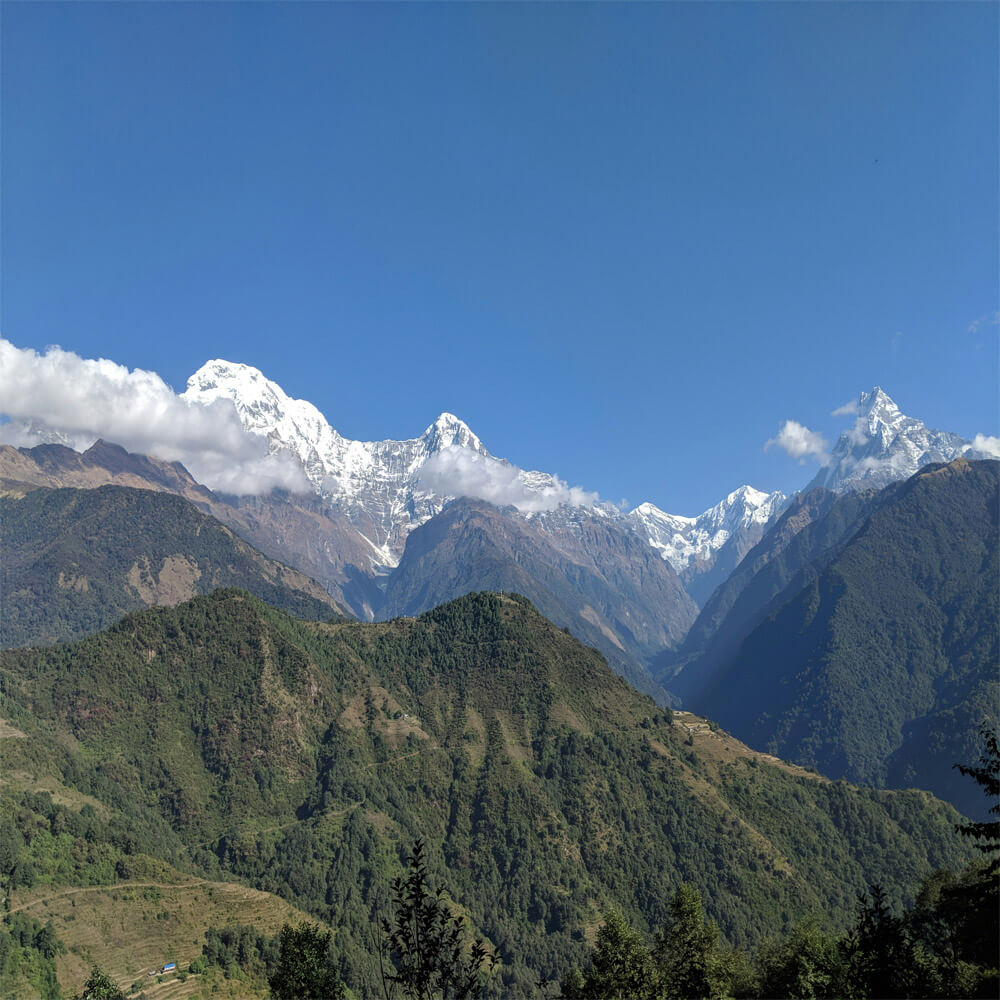
After walking in the cold for several days, you may wish to take a hot shower throughout the expedition. Hot showers are not free, though. Showers at most teahouses cost between $1 and $3. It might even be slightly more expensive in higher locations. If you take a hot shower every day, it can become expensive.
Wi-Fi is also available in many villages, but it is not always free. It usually costs around $2 to $5 each time. And sometimes, the Wi-Fi is slow and doesn’t work well. If you need to talk to your family or share photos online, you might have to pay more than once.
Charging your phone or camera is also not free at higher altitudes. Teahouses charge around $1 to $3 for each device. This is because they use solar power or small batteries, and electricity is limited. So, if you carry many devices, you will pay more.
Another cost is drinking water. Bottled water is expensive and not good for the environment. You can buy boiled water from teahouses, but that also costs about $1 to $3 per liter. To save money, many trekkers bring water-purifying tablets or reusable water filters. Teahouses sell boiled water, but it costs between $1 and $3 per liter. Many trekkers bring reusable water filters or water-purifying pills to save money.
Tips, Snacks, and Other Small Items
You can come across tiny stores or bakeries along the trail that offer tea, coffee, chocolate, cookies, and other refreshments. Although they are more expensive than in the city, these are enjoyable to eat, particularly when you are exhausted. A chocolate bar may cost twice as much.
Remember to include tips. It is a polite and considerate approach to express gratitude to your porter and guide. Many trekkers tip around 10% of the total cost of the trek. You may also want to donate small money to local temples or schools, or buy handmade things from villagers. These are not must-haves, but they support the local people. So, always bring a little extra money just in case. It helps make your trek smoother and stress-free.
Saving Money: Tips for Budget Trekkers
Although trekking to Annapurna Circuit is an exciting experience, it does not have to be expensive. You may enjoy the entire trip without going over budget if you plan ahead. Here are five simple strategies to cut costs while trekking:
Bring Snacks and a Water Filter
It might be costly to purchase bottled water and food when trekking. Bring your own biscuits from Pokhara or Kathmandu, energy bars, or dry fruits. Additionally, to avoid purchasing plastic water bottles on a daily basis, use a water filter or water-purifying tablets.
Share Rooms and Meals with Others
You can share meals or a room if you trek with friends or meet other trekkers. If two people share a room, many teahouses will give you a cheaper rate. To save money, you can also share big dinners like dal bhat.
Annapurna Circuit Trek in the Off-Season
The busiest and most costly months are spring and fall. The cost of lodging and meals may be lower if you visit in the early winter or late monsoon season (such as December or September). Simply prepare for varying weather conditions.
Rent Gear Instead of Buying It
In Kathmandu or Pokhara, you can rent sleeping bags, trekking jackets, and walking poles for a nominal cost. Renting is far less expensive than purchasing new equipment.
Book with Reputable Local Trekking Company
A local business such as Nepal Trekking Routes provides reasonable rates and handles all of your requirements, including lodging, guides, and permits. Compared to organizing everything alone, it is simpler and frequently less expensive. You may have fun on the Annapurna Circuit trip without breaking the bank if you follow these suggestions. A little preparation makes a big difference!
Package Trek vs Independent Trekking
You have two options when organizing your Annapurna Circuit Trek: traveling solo or as part of a package. Each approach has advantages and disadvantages. Let us discover what distinguishes them.
Annapurna Circuit Trekking Package Cost
When you go on a Annapurna curcuit package trek, everything is planned for you. Our agency, Nepal Trekking Routes, will handle your permits, lodging, meals, transportation, guide, and porter. You simply walk and relish the experience. If this is your first time visiting Nepal or going on a major mountain trip, this is a good option. Because your guide is familiar with the trail and can assist if something goes wrong, it is also safer. You do not need to bother about finding your way or making teahouse reservations.
Although a guided trek is typically more expensive perhaps between $1,000 and $1,500 for the entire journey it offers you piece of mind. It is similar to taking a field trip with an all-knowing teacher!
Annapurna Circuit tour price for Independent Trekking
Independent trekking entails walking without a guide. You organize the entire trip on your own. You have more freedom and it is less expensive this way. You can walk more or less, stop where you want, and eat where you want. However, it is more difficult. You must either hire a porter or carry your own bag. Every day, you will have to find the correct trail, purchase permits, and reserve lodging. Going alone could be enjoyable if you are self-assured, have trekking experience, or know a little Nepali.
Some of Frequently Asked Question
What is Annapurna Circuit trek cost for foreigners?
Depending on the number of days, whether you hire a guide or porter, and your preferences for transportation and food, the total cost for foreigners can range from $700 to $1,500.
Can you explain Annapurna Circuit trek cost breakdown?
Depending on the route and travel style, budget about $30 for permits, $20 to $30 per day for meals and lodging, $25 to $35 per day for a guide, and $20 to $100 per day for transportation.
What is Annapurna Circuit trekking cost per day?
The Annapurna Circuit Trekking price ranges from $30 to $70 per day, which includes accommodation, meals, and the optional guide or porter. Trekking alone and staying at inexpensive teahouses along the route will save you money.
What are Cheap Annapurna Circuit trekking packages?
For 12–15 days, cheap packages range from $700 to $900. These typically consist of permits, a guide, a porter, local transportation, and basic lodging provided by our company.
Conclusion: Annapurna Circuit Trek cost
Spending money on the Annapurna Circuit Trek is well worth it. You get to walk through serene villages, green forests, and stunning mountains. The vistas are breathtaking and change every day. Deep valleys, towering snow-capped peaks, and even yaks passing by are visible!
Although the price may appear costly at first, it covers a lot of expenses, including your lodging, meals, permits, a guide, and occasionally a porter. Along the route, you meet amiable individuals and gain knowledge about various civilizations.
You get a lot for your money on this adventure when compared to trips in other nations. Additionally, you may enjoy the adventure while keeping costs down if you plan beforehand. Many claim that this walk transformed their lives. Therefore, it is more than just a trip; it is a significant experience that you will never forget. It is well worth the walk if you enjoy the outdoors.





.webp&w=1200&q=75&dpl=dpl_4U3CaZUV3Y5iKdBNPJmVMATJy3AB)
